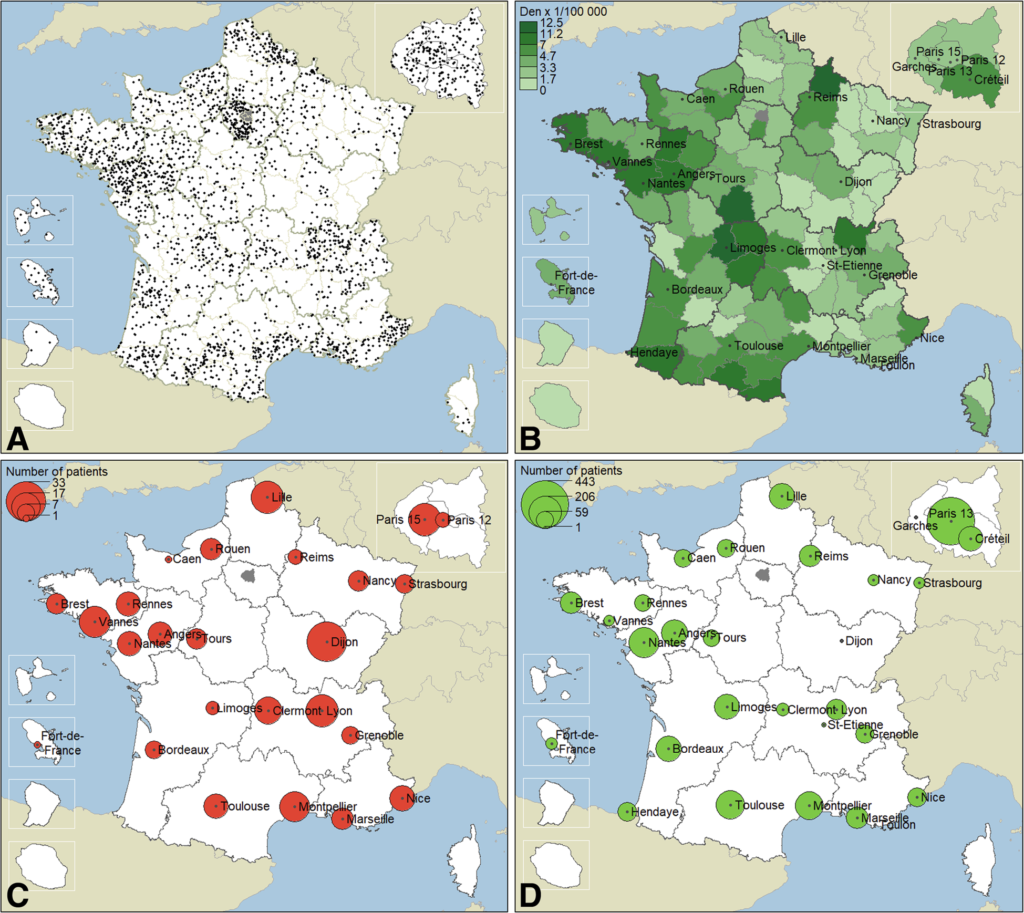A new article gives good information on the breakdown of DM1 in the French population.

place of residence and dots position is allocated to a random position in the corresponding department (top left). b The regional distribution
according to the density of population (N = 2875). Darker the green is, more the DM is prevalent in the department (top right). c Distribution of
DM-Scope Registry enrolled patients among paediatric French neuromuscular expert centres (26 centres, N = 255). The number of enrolled
patients is spot-size dependent (bottom left). d Distribution of DM-Scope Registry enrolled patients among adult French neuromuscular expert
centres (29 centres, N = 2620). The number of enrolled patients is spot-size dependent (bottom right)

